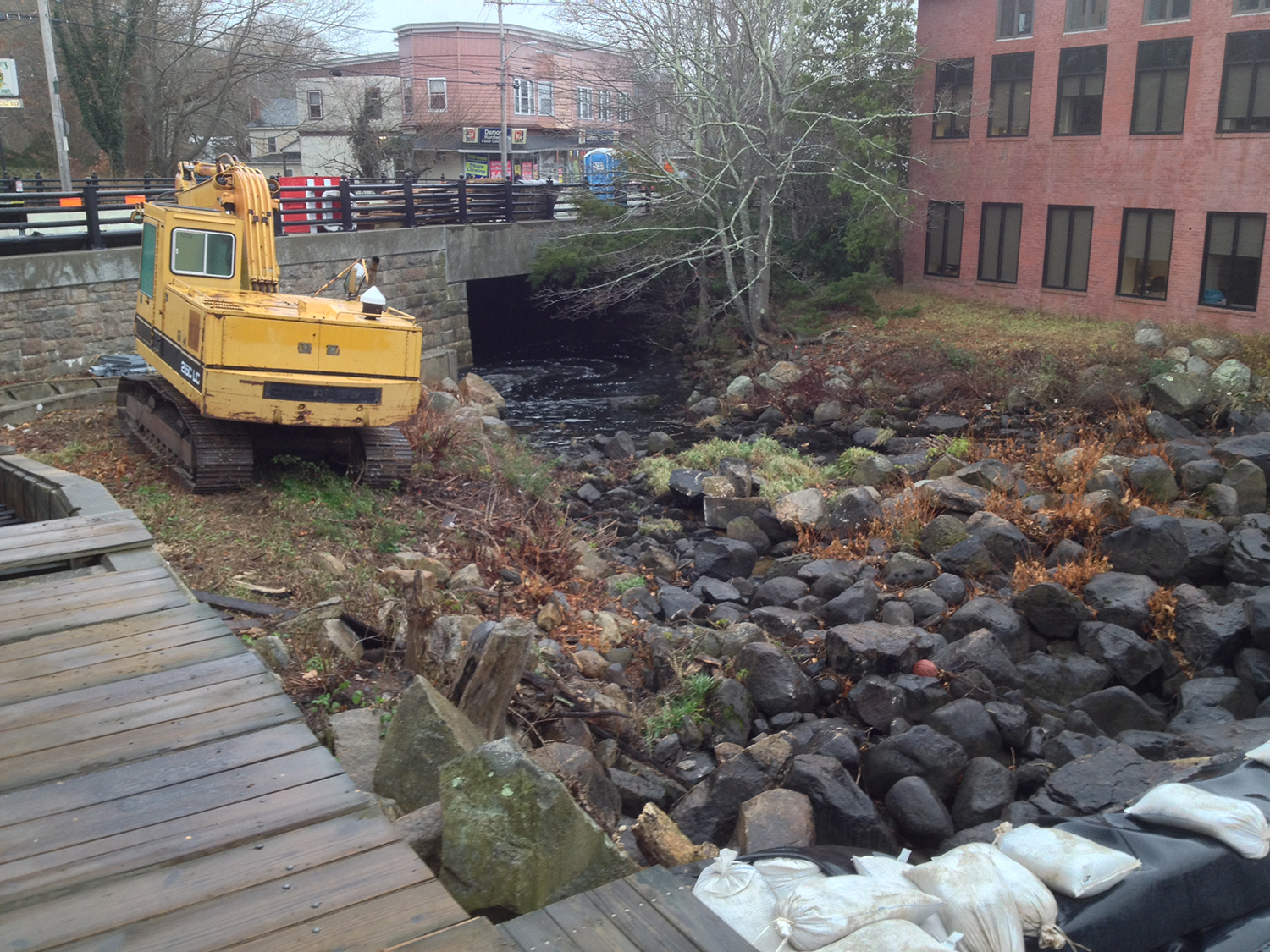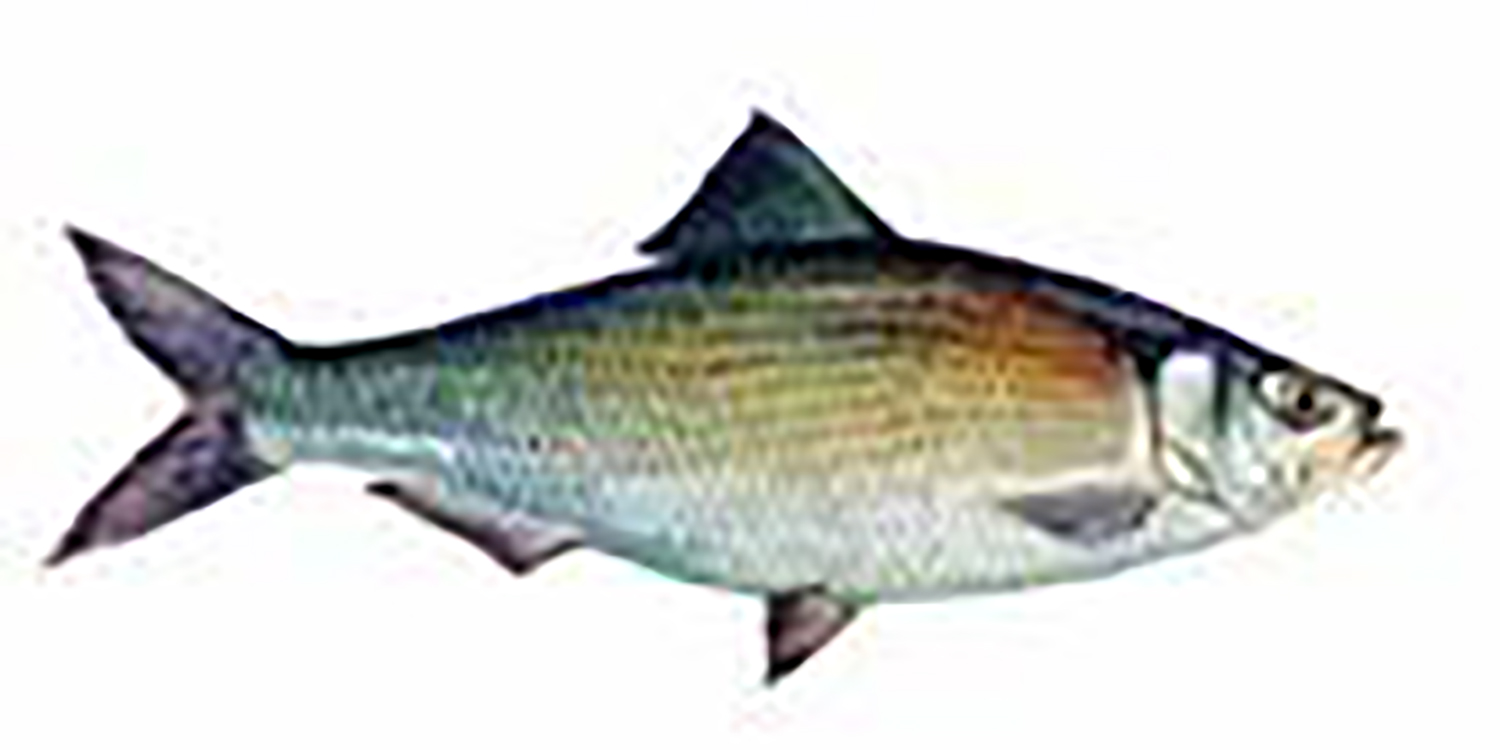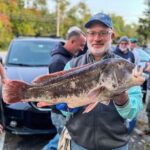Narragansett Dock Works has lowered an excavator onto the rocky tow of the Main Street dam in Wakefield. This is the first step in the process to reconstruct the Denil-style fish ladder system, originally built it the early 1970’s. The reconstruction will incorporate a reduced water flow and a reengineered pathway, enabling greater numbers of returning river herring to up-migrate to calmer waters for spawning. This we have covered in fine detail over the past few months. What is most exciting is that construction has actually begun and that a passageway for eels is being incorporated.
American eels, Anguilla rostrata, are catadramous fishes who spend most of their lives in freshwater before heading to the Sargasso Sea to spawn and then die. They are consumers of small fish, insects, some small larvae and the occasional amphibian. Eels also consume other deceased animals, which while largely unappealing to most, serves a valuable role in an efficient and clean ecosystem. With all our scientific advances, it’s interesting to note that there exists no first-hand account of eels mating. It’s also interesting to know there remain a sacred few things that haven’t gone viral on YouTube.
Eels are an important part of the ecosystem, contribute to overall river health and have been migrating here for a few millennia longer than we have. A tip of the camo hat to DEM biologists who, according to the Final Restoration Plan and Environmental Assessment Rose Hill Landfill Site “annually document the presence of river herring and American eel at the base of the dams, and low numbers of river herring passing through the fish ways. Based on fishery and hydraulic assessments at these two dam barriers, there is evidence that the existing structural fish ways are not functioning properly to efficiently pass river herring or American eel.” That assessment means American eels get the same treatment as our buckies, and that’s great news for our town.
Young returning eels are called glass eels and later, elvers after they lose their remarkable transparency trait and turn a dull grey-brown. With their scales tightly embedded in their skin and matted with a sticky mucus layer, eels can absorb oxygen through the skin, allowing them to stay alive out of the water for several hours. That mucus is what makes them so hard to handle and also stains your shirt and jeans as you chase them around the deck when they slip out of the plastic bag or when your bucket tips over.
Moving up the river, typically at night and in large groups, they are attracted to areas of moving waters. Eels can manage their way up and over some impediments like rocks and small dam walls. Unfortunately, two key areas on the Saugatucket are walled off with tall dams and the existing fish ladders are too aggressive for them to swim to safe passage. This new construction of eel passages should remedy that.
Eel ways are pretty simple in design. The primary idea is that moving water will attract the eels, so water is sent cascading down over a textured substrate like FishPass or Enkamat. This affords eels a surface over which to gain some traction as they naturally move upward. At the top, eels fall into in any of several differently designed buckets, where they are typically moved to safe water by hand. Eels can be counted manually at this point or by electronic eyes. Several of these, in slightly different variations, are in service on the Saugus River and in Orleans, Massachusetts, in addition to the Mary Steube Dam Bucket Trap on the Mill Brook in Old Lyme, Connecticut. According to Andres Aveledo, Conservation Engineer at RIDEM, “the eel passage component will include piping to carry water to an installed eel ramp. The eels will travel up the eel ramp and into a collection box where they will be manually lifted upstream of the dam by F&W staff daily during migration periods”. Now that is your tax dollars at work.
A recharged eel population will offer benefits on several levels. Obviously, a stronger population will be closer to the way things were before we pin cushioned the river with sewer pipes, dammed it and stained her with ink, so their return is an obvious win. River herring graze on phytoplankton and eels consume carrion so a strong population of both will work in unison to improve river water clarity, which unfortunately begins with Mitchell Brook flowing through the Rose Hill Landfill Superfund Site. Another side of the benefit equation will be local fishermen.
Currently, it is legal to take up to fifty eels with a minimum size of six inches from Rhode Island waters and certainly one would rather harvest such a large number of eels if the population could actually support said harvest. One feeling that probably cannot be scientifically proven but is certainly acknowledged by locals is that stripers hate eels, which makes for great fishing. Anglers know about fierce, angry strikes, eels hanging out of gills, and stripers, dorsal fins exposed, racing over shallow rocks to attack drifted eels. Perhaps it’s the eel’s “S” swimming action that drives them mad. Perhaps it’s the color, as some feel darker eels draw more strikes. Whatever the cause, bass hate eels.
Constructing a passive resting pool at the fish ladder entrance and a new passageway for eels are fantastic first steps in restoring the overall quality of the Saugatucket River. Man has been here for just a few hundred years and has a history of degrading water quality while harvesting animals to the point of collapse but these fishes have memories thousands of years long of heading up stream in clear water. This construction provides potential for population booms of native fishes and although there no longer exists sufficient high water and safe habitat for Atlantic salmon to make their return, this river could run silver again. Narragansett Dock Works did an excellent job with the Galilee boat ramp and hopefully will do the same right here in Wakefield.







0 Comments